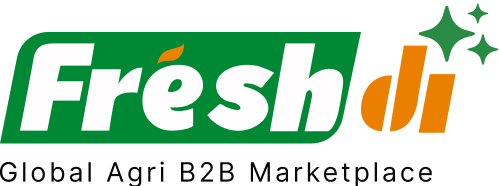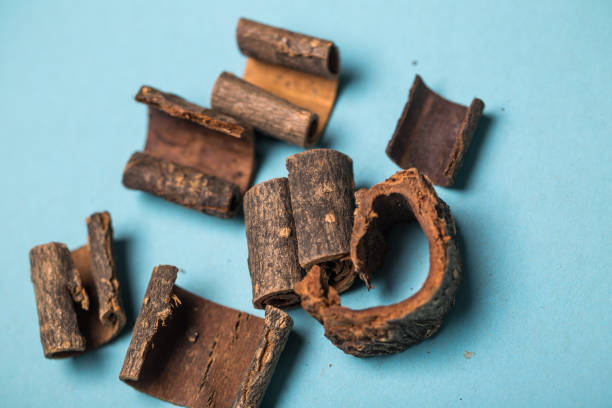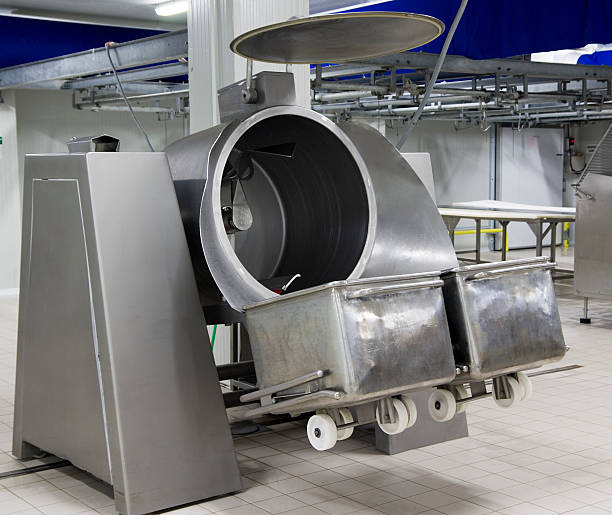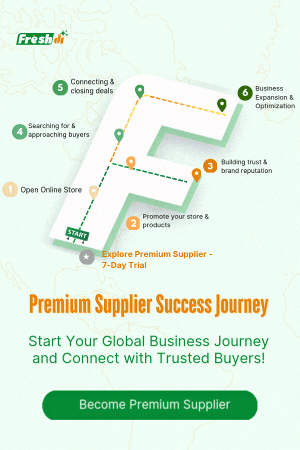Introduction – Vietnam’s Cassia Market by the Numbers
Vietnam isn’t just a beautiful country with rich culture and stunning landscapes—it’s also a global powerhouse when it comes to cassia cinnamon exports. If you’re sourcing cassia, especially the high-oil-content Saigon cinnamon, Vietnam should be at the top of your list.
Let’s break it down: in 2023, Vietnam produced a whopping 55,213 tons of cassia cinnamon. That’s around 23% of the global supply, out of a worldwide total of 238,403 tons. By 2024, exports had skyrocketed to nearly 90,000 tons, pulling in over $260 million in revenue. That’s not just growth—it’s serious momentum.
And the trend isn’t slowing down. From January to August 2025, Vietnam exported 83,045 tons of cassia, already worth over $210 million. That’s a 19% increase in volume and a 32% boost in value compared to the same period last year.
Clearly, Vietnam’s cassia industry is booming. But how can buyers ensure they’re sourcing from the best suppliers in this rapidly expanding market? That’s where a data-driven approach—and tools like Freshdi—come into play.
Deep Dive – Key Production, Export Statistics & Market Signals
Vietnam’s cassia exports are experiencing robust growth, and the stats speak for themselves:
- 2023 production: 55,213 tons (23% global share)
- 2024 exports: Nearly 90,000 tons, worth $260M (14.6% increase in volume)
- Top markets: India (35.9%), the U.S., EU, Bangladesh, and China
India remains the biggest buyer, although its imports dipped by 5.7% in 2024. Meanwhile, the U.S. ramped up imports by 9%, and Bangladesh surged by 42.5%. These shifts reveal changing demand patterns, which are crucial for suppliers and buyers to track.
Platforms like Freshdi help buyers monitor RFQ (Request for Quotation) data, giving insight into which cassia types and formats—like sticks, powder, or broken pieces—are trending. When RFQs spike in a region, it’s a clear signal of demand, helping buyers adjust their sourcing strategies accordingly.
Top 5 Verified Cassia Suppliers in Vietnam – Top Tier Based on Export Data
Choosing a reliable supplier isn’t just about price—it’s about certifications, consistency, global reach, and positive feedback from international buyers. Based on export performance and buyer reviews on Freshdi, here are the top-performing cassia suppliers in Vietnam as of July 2025:
1. AGRIKIM.,JSC
A veteran in the spice game, AGRIKIM is known for its high-quality, naturally split cassia sticks. Their products are well-dried, richly aromatic, and consistently exported to Europe and Asia.
2. ECOLUTION COMPANY LIMITED
ECOLUTION stands out with a strong commitment to sustainability. Their cassia products boast high essential oil content, making them a hit in the food and pharmaceutical industries.
3. November Import And Export Co., Ltd.
November Co. offers new-crop cassia with a focus on freshness and uniform grading. They cater to large-volume buyers, especially from the Middle East and South Asia.
4. DACE
DACE is an emerging star with a strong domestic network and a rising international reputation. Their cinnamon is known for its purity and intense flavor profile.
5. FRESHGOODS GROUP
As the name suggests, FRESHGOODS delivers on freshness. Their split cassia is steam-treated and meets strict export standards, making them a favorite among U.S. and EU buyers.
Dynamic Ranking Note
Keep in mind, supplier rankings can shift month to month. Platforms like Freshdi offer dynamic features such as “Suppliers of the Month” or “Top Exporters by Region,” giving buyers real-time updates on supplier performance, based on recent shipments, RFQs, and customer feedback.
Market Navigation – Statistical Trends, Pricing Analysis & Export Dynamics
Cassia may be an ancient spice, but understanding its market in 2025 requires modern insights.
Demand Signals by Variant
From split cassia sticks to cassia powder and broken cassia, different markets prefer different formats:
- India: Mostly imports split and broken cassia for industrial grinding.
- USA & EU: Prefer cleaned and polished sticks for retail packaging.
- China & Bangladesh: High demand for cassia chips and medium-grade sticks.
Buyers can use Freshdi’s trend dashboards to analyze which variants are gaining traction. For instance, a rise in RFQs for polished sticks in the EU could signal an upcoming price hike due to limited supply.
Seasonal Price Fluctuations
Cassia prices often spike after the harvest season ends (typically from September to December), when fresh stock is limited. Historical pricing data can guide buyers on when to lock in contracts or negotiate bulk deals.
By comparing export data with Freshdi’s pricing intelligence, buyers can time their purchases smartly and avoid overpaying during peak demand.
Conclusion – Leveraging Data for Strategic Sourcing
Vietnam has clearly established itself as a global leader in cassia production and export. With nearly a quarter of the world’s supply and consistently growing export value, it’s the go-to destination for cassia buyers worldwide.
But here’s the catch—navigating such a competitive market requires more than just knowing the top exporters. It demands a strategic, data-backed approach.
That’s where platforms like Freshdi shine. They offer:
- Verified supplier profiles
- Real-time RFQ trends
- Dynamic ranking systems
- Export volume tracking
- Buyer reviews and certifications
Whether you’re sourcing for a spice brand in the U.S. or a bulk distributor in India, using tools offered by Freshdi can help you stay competitive, informed, and ahead of the market curve.
Key Takeaways
- Vietnam exported over 83,000 tons of cassia in the first 8 months of 2025.
- Major importers include India, the U.S., EU, Bangladesh, and China.
- Freshdi helps buyers track RFQ trends, supplier performance, and price dynamics.
- Top suppliers like AGRIKIM, ECOLUTION, and DACE are leading the charge in export quality.
- Seasonal planning and data-driven sourcing are essential in today’s global spice trade.
Cassia Buyer’s Checklist
✅ Verify supplier credentials and certifications
✅ Check export history and buyer reviews on Freshdi
✅ Monitor RFQ trends and variant demand
✅ Time your purchase to avoid seasonal price hikes
✅ Favor suppliers with consistent quality and communication
Future Outlook
Looking ahead, Vietnam’s cassia market is expected to continue its upward trajectory. With rising demand from health-conscious consumers and food manufacturers, cassia’s applications are expanding beyond just spice shelves.
Emerging technologies like blockchain transparency, AI-driven demand forecasting, and sustainable farming practices will reshape how cassia is sourced and sold globally.
Platforms like Freshdi are set to play a pivotal role in this evolution—connecting buyers with reliable suppliers, offering real-time insights, and creating a smarter, more efficient spice trade ecosystem.
FAQs
1. What makes Vietnamese cassia cinnamon unique?
Vietnamese cassia, often called Saigon cinnamon, has a high essential oil content and a stronger, sweeter flavor compared to other varieties. It’s ideal for flavor-intensive applications.
2. How can I verify a cassia supplier from Vietnam?
Use platforms like Freshdi to check supplier certifications, export history, buyer reviews, and real-time performance rankings.
3. When is the best time to buy cassia from Vietnam?
Right after the harvest season (September–December) is usually the best time. Prices tend to rise in the off-season due to limited supply.
4. Which cassia format is most in demand globally?
Split sticks and powder are in high demand in the U.S. and EU, while broken cassia and chips are preferred in South Asia and China.
5. Can I request samples before placing a large order?
Yes, most verified suppliers listed on Freshdi offer samples upon request, especially for bulk buyers and long-term sourcing agreements.
References
- Wikipedia – Cinnamon Production
- Havigo – High Quality Cassia Spice
- ExportViet – Vietnam’s Cassia Cinnamon Export Performance in 2024
- Commodity Board – Vietnam Cassia Market Trends
- Techvina – Sustainable Cassia Development





